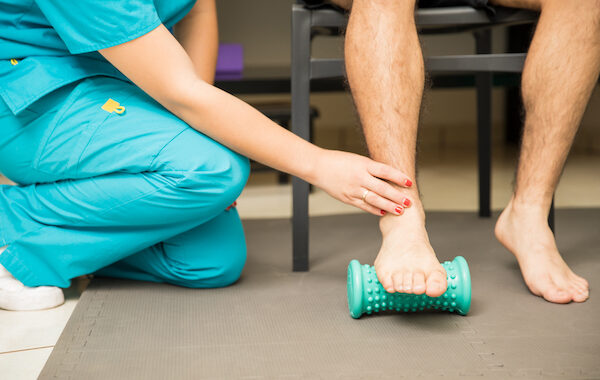Plantar fasciitis is one of the most common foot ailments, affecting about 1 in every 10 people. Plantar fasciitis can be identified by a sharp, stabbing pain in the bottom of the foot, usually near the heel. In most cases, this pain is most severe early in the day, or following prolonged periods of sitting or standing.
Thankfully, there are several ways to treat plantar fasciitis on your own. But for those looking to understand more about the condition, and how to avoid it, this guide is for you.
Plantar Fasciitis Treatment & Causes
The plantar fascia is a thick band of tissue connecting the heel bone to the toes. This tissue band stretches across the entire bottom of the foot. In addition to connecting the foot bones, it provides arch support and shock absorption when walking or running.
Plantar fasciitis is a condition in which the plantar fascia becomes inflamed. This can be caused by excessive tension or stress along the bottom of the foot. As such, most plantar fasciitis treatment is aimed at relieving stress in the foot. A podiatrist might prescribe a walking boot or other orthotics to help stabilize the foot, for instance.
Plantar Fasciitis Stretches
Plantar fasciitis stretches can also be used to manage and relieve pain, along with orthotics. One of the most common stretches involves sitting in a chair and rolling the affected foot over a foam roller or cold water bottle. Another seated stretch involves pulling the big toe gently upward and holding that position for 15-30 seconds.
These plantar fasciitis stretches can be used to both treat and prevent plantar fasciitis. Stretching the foot relieves tension, which prevents the plantar fascia from becoming inflamed in the first place.
Other Plantar Fasciitis Prevention Methods
Stretches are not the only form of preemptive plantar fasciitis treatment available. You can also avoid developing plantar fasciitis by understanding the associated risk factors.
Plantar fasciitis is often caused by stress caused by high impact or shock on the foot. This is why it is particularly prevalent among athletes. You can take steps to avoid plantar fasciitis by wearing proper footwear when playing sports or exercising. Also, remember to apply ice to the foot afterward.
Additionally, maintaining a healthy body weight helps to reduce the risk of plantar fasciitis. The more weight you put on your foot, the more stress it is under. This can easily lead to excessive stress on the plantar fascia.
Best Shoes for Plantar Fasciitis
Footwear plays a major role in the prevention and treatment of plantar fasciitis. If you are experiencing heel pain, changing your footwear should be one of the first steps you take for treatment.
The best shoes for plantar fasciitis should provide plenty of support, especially in the heel. A soft cushion on the heel of the foot can help with plantar fasciitis. If your shoes don’t provide enough support, you might also buy insoles for plantar fasciitis.
It is also critical to make sure that your shoes are the right size. Improperly fitting can put all kinds of stress on the foot, not just the plantar fascia. This can lead to several ailments in addition to plantar fasciitis.
If you are experiencing foot pain of any kind you can find advice and foot pain relief products on our store.

